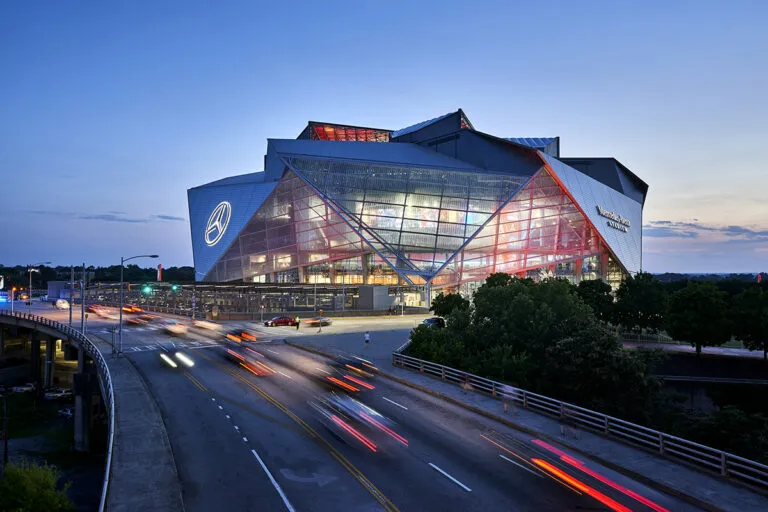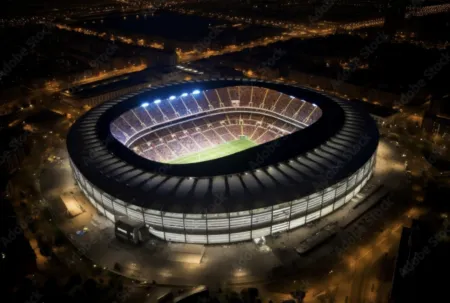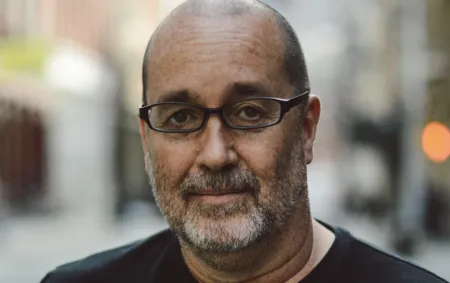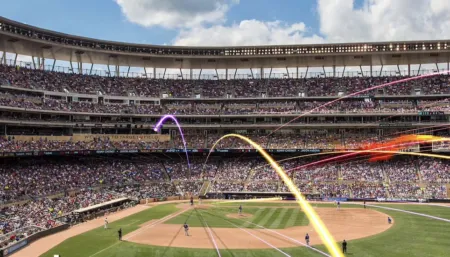The LEED building movement is gaining ground in the US, and sports stadia are at the forefront of a green construction industry that’s bringing innovative design and forward-thinking sustainability programs to the field.
In fact, for building complexes that have traditionally had an extremely large impact on the environment, LEED-certified stadiums are not only promoting sustainable construction methods and materials, but also showing just how far LEED can be taken with existing buildings through the integration of renewable energy sources, better waste management and recycling solutions, and even food donations and educational programs.
Here, we take a look at some of the most famous stadia in the US and how they’ve achieved LEED status.
Alaska Airlines Field, Seattle
Known simply as the Husky Stadium, this 70,138-capacity football stadium is home to the Washington Huskies and underwent a US$280m redesign in 2013. Awarded Silver on the LEED-certified buildings list for its sustainable construction plan and environmentally conscious approach to waste management, the stadium also implemented Salmon Safe practices that ensured all waste water was filtered before it was returned to Lake Washington. Additionally, LED lighting and low-flow water fixtures across the entire complex have helped to reduce energy expenditure significantly.
Amway Center, Orlando
Home to the Orlando Magic (NBA), the Amway Centre in Florida received LEED Gold certification in 2011 for its sustainable design and construction methods. Built on an “ideal sustainable site,” the stadium helped combat urban sprawl by redeveloping an existing part of town. More than 8,000 tons of construction material were diverted away from landfill while more than 20 percent of construction materials used were recycled. This LEED building is also recognized for its 5,000-gallon rain water collection cistern that irrigates the site.
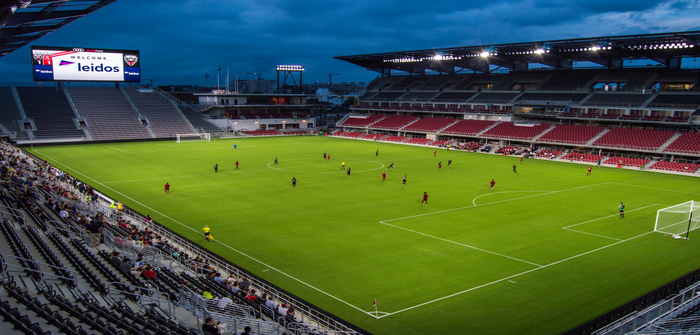
Audi Field, Washington DC
Home to MLS franchise DC United, Audi Field boasts a capacity of 20,000 and has earned Gold status on the LEED buildings list. One of the league’s most energy-efficient stadiums, it has LED technology throughout the arena. Among other initiatives, the stadium has championed landfill waste reduction through recycling programs. Solar panels and a green roof are also planned additions to the building, helping to reduce the facility’s carbon footprint in the future.
Barclays Center, New York, NY
Home to the Brooklyn Nets (NBA) and the Brooklyn Islanders (NHL), Barclays Center in New York was awarded LEED building Silver Certification in 2013, around a year after construction was complete. The initial concept of the center was designed by architectural visionary Frank Gehry, and it is now recognized in five categories, including sustainable sites, water efficiency, energy and atmosphere, materials and resources, and indoor environmental quality, along with innovation and design.
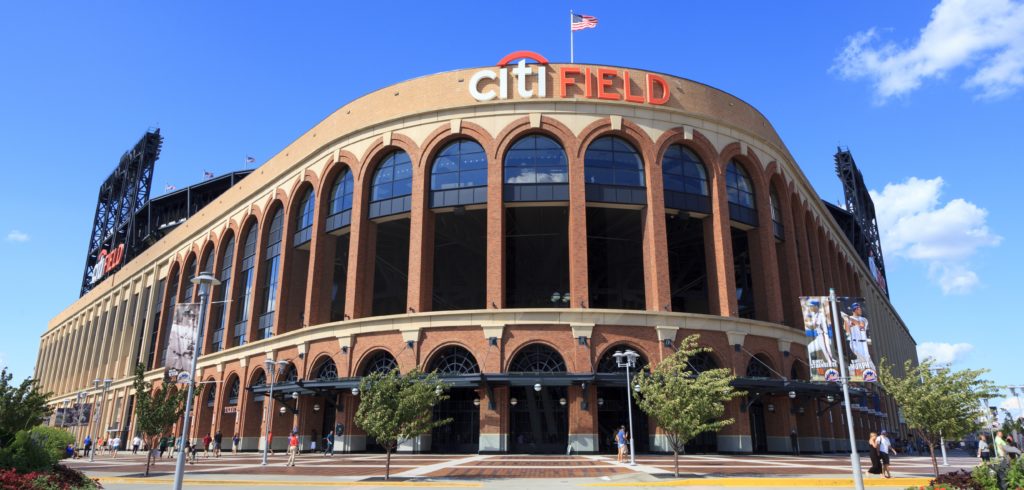
Citi Field, New York, NY
Built as a replacement for the Shea Stadium, which opened in 1964 to celebrate the New York World’s Fair, Citi Field is home to the New York Mets and has seen a record attendance of 44,859. This state-of-the-art facility earned Gold certification on the LEED buildings list and has an innovative approach to recycling and reuse of materials. Following the 2018 Winter Classic NHL game hosted there, Citi Field was able to recycle the hockey rink used during the game. The materials were then donated to the New York Materials for the Arts (MFTA) for reuse.
CU Events Center, Boulder
This 11,064-seat multipurpose arena is home to both the men’s and women’s teams of the Colorado Buffaloes. For more than 20 years, the stadium was known as the Coors Events/Conference Center, but since 2008 it has undergone numerous alterations. The most significant of these was the 44,000-square-foot basketball and volleyball practice facility that was awarded LEED Platinum building status — one of many LEED-certified buildings at the complex.
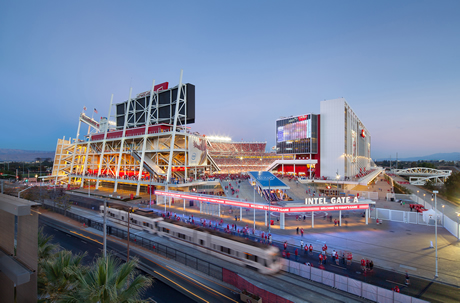
Levi’s Stadium, Santa Clara
The Levi’s Stadium in Santa Clara, California, was the first professional sports stadium to receive LEED Gold certification, and in fact, it has made it on to the LEED-certified buildings list twice, with Gold certification for both construction and operations and management. Home to the San Francisco 49ers (NFL), the stadium includes a green roof and solar panels and has scored highly for innovation and indoor environmental quality.
Lincoln Financial Field, Philadelphia
Including 11,000 fixed solar panels and 14 micro wind-turbines, Lincoln Financial Field received LEED Gold certification in 2018. Home to the Philadelphia Eagles (NFL), the stadium diverts more than 99% of waste away from landfill and uses plastic alternatives from 100% renewable resources that can be composted. The installation of water fountains in place of water bottles has also helped the stadium reduce its environmental impact considerably. Additionally, a reforestation program has allowed this LEED building to plant more than 5,900 trees in the aptly named “Eagles Forest.”
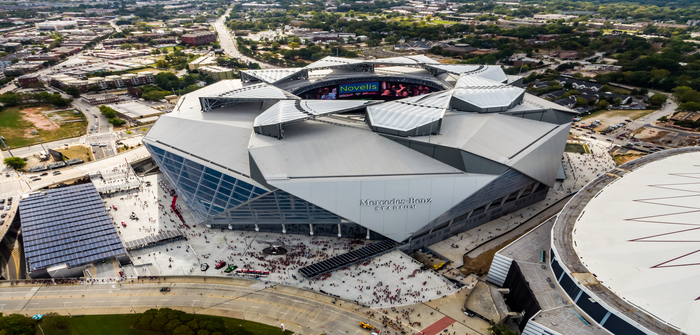
Mercedes-Benz Stadium, Atlanta
The Mercedes-Benz Stadium in Atlanta is a multipurpose stadium and is home to the Atlanta Falcons (NFL) and Atlanta United FC (MLS). It was the host of the 2019 Super Bowl and holds the record for attendance at an MLS game (71,874). As a LEED Platinum building, it has received top marks in almost every category, including 10/10 in water efficiency, 6/6 for innovation and 26/26 for sustainable sites.
Miller Park, Milwaukee
Home to the Milwaukee Brewers (MLB), Miller Park was completed in 2001 but only became a LEED building in 2012. This was achieved by retrofitting fixtures to save 3 million gallons of water per year, introducing 40 large recycling containers, switching to “Green Cleaning” products, and donating food waste to local food banks and shelters. A variety of other sustainability programs were also introduced, and while design and construction of the stadium were not LEED-certified, Miller Park remains a shining example of how stadiums can become sustainable even after construction.
Nationals Park, Washington DC
As the first Major League LEED-certified stadium in the U.S., Nationals Park has served as a blueprint to what a sustainable stadium can achieve. Home to the Washington Nationals (MLB), the stadium was added to the LEED-certified buildings list in 2008 and recognized for its use of energy efficient lighting, its management of storm water leaving the site due to its proximity to the Anacostia River and its use of recycled materials during construction, among many other factors.
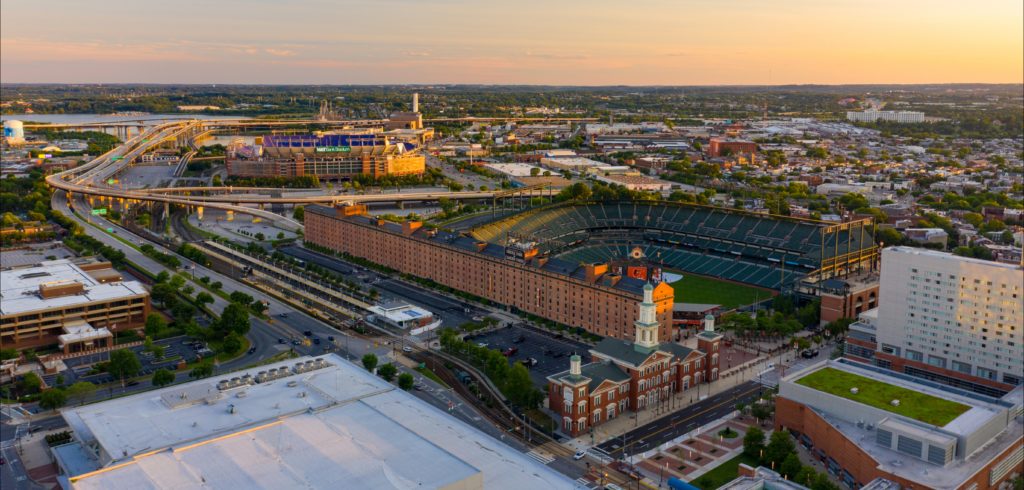
Oriole Park, Baltimore
Awarded Gold certification in 2018, Oriole Park became a LEED building thanks to a multi-year effort involving research and stadium improvements. Including over 200 recycling containers, the use of responsible energy practices and through the implementation of paperless ticketing, this stadium is among the oldest to receive LEED Gold status. Home to the Baltimore Orioles (MLB), it also encourages fans to travel to games using trains, buses and bikes.
Salt River Fields, Scottsdale
Salt River Fields at Talking Stick, named in recognition of the Pima–Maricopa Indian Community of whose land it is built upon, serves as the MLB training ground for the Arizona Diamondbacks and the Colorado Rockies. Achieving Gold status on the LEED-certified buildings list upon opening in 2011, Salt River Fields is situated for maximum shade from the Arizona sun and has replanted thousands of native trees and cacti. Both of these factors have increased energy efficiency by reducing the building’s reliance on air conditioning. Additionally, the use of local materials in construction has further added to this stadium’s green credentials.
The Pit, Albuquerque
The Pit in Alberquerque opened in 1966 and achieved LEED buildings status thanks to a large-scale redevelopment that saved the building from demolition. Home to the University of New Mexico Lobo basketball teams, its nickname comes from a subterranean design that accentuates the atmosphere — a design that was wrapped in an innovative glass structure to preserve the existing building while improving efficiency. 95.1% of construction waste was diverted during the renovation, and the stadium was awarded LEED Silver in 2012.
Toyota Center, Houston
Certified Silver in 2010, the Toyota Center is home to the Houston Rockets (NBA) and players wear eco-friendly uniforms. The stadium also implements sustainable landscaping featuring drought tolerant plants, uses renewable energy through the installation of an 8.79-megawatt solar system and employs a state-of-the-art rainwater capture system that provides water for irrigation. Additionally, during the construction phase, more than 99 percent of construction waste was recycled.
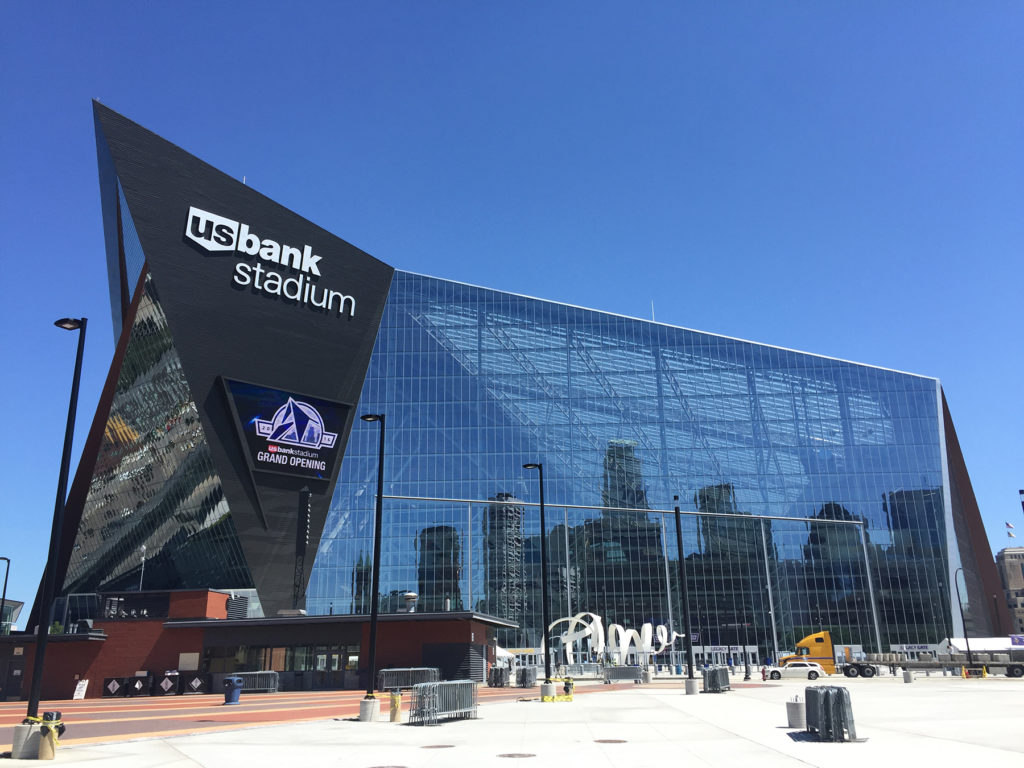
U.S. Bank Stadium, Minneapolis
The U.S. Bank Stadium was awarded LEED Gold certification in 2017 and then hosted the Super Bowl in 2018. Home to the Minnesota Vikings (NFL), this spectacular LEED building features a transparent glass roof and walls and has been recognized for its innovative design that reduces the use of steel while creating a “heat reservoir” that works as a natural snow melt system. It also runs a sustainability program that is designed to produce zero waste.


